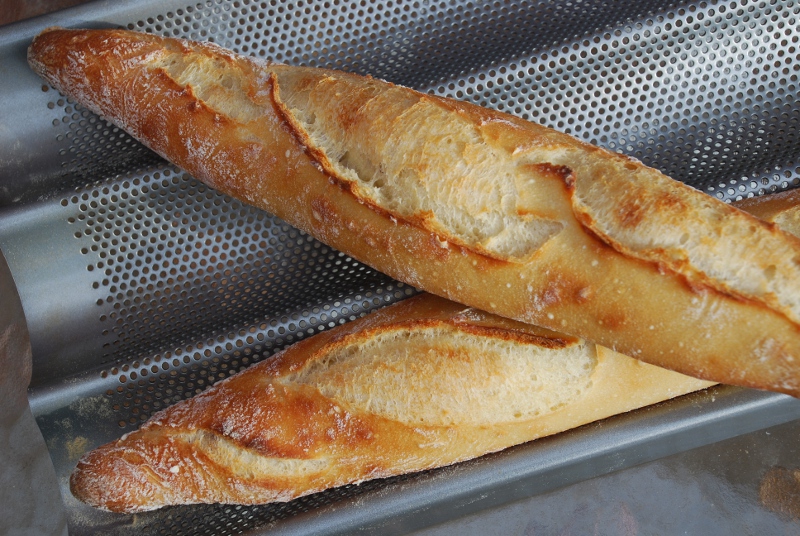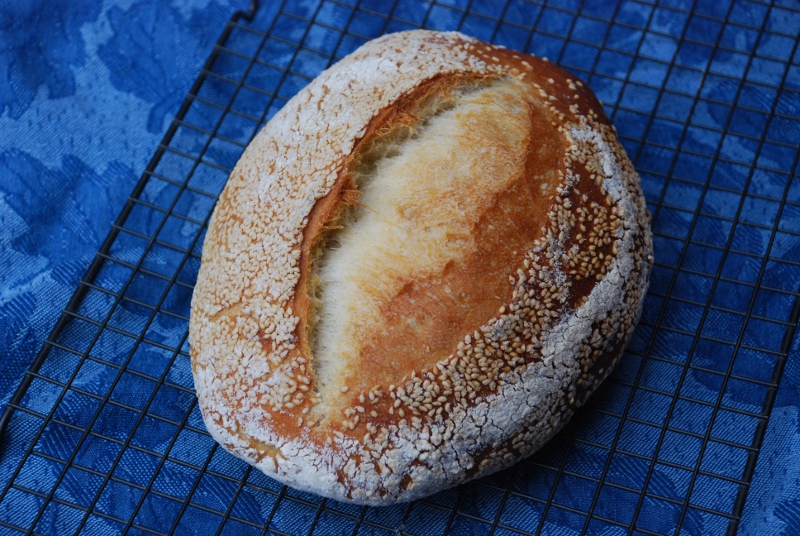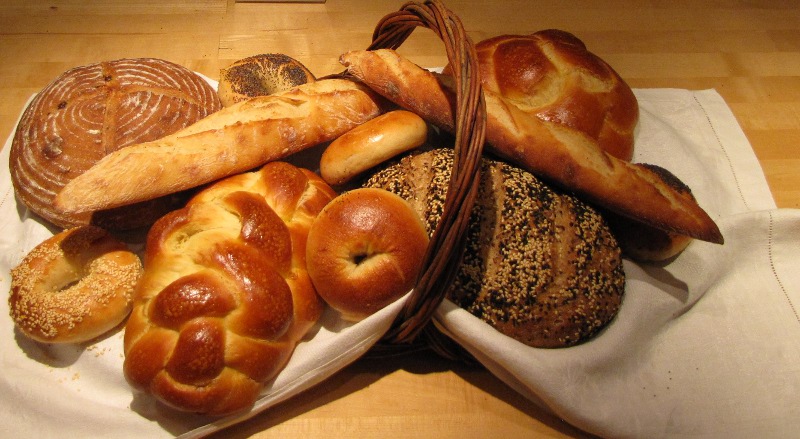What could be more simple, or more difficult than a baguette? It's safe to say that in the few months since I decided it was time to learn to make baguettes, I have tried around 20 different approaches. Many of these failed, and many were pretty good. Many followed along with strategies outlined by TFLers. And yet a tweak here, a chainsaw there, and pretty soon I was off on my own.
So many decisions when it comes to the humble baguette:
1. Hydration - Is it really ciabatta when you head north of 72% or is that the place to be?
2. Flour - If you add whole grains is it still a baguette?
3. Commercial yeast and/or starter?
4. Bulk and/or shaped retard?
5. Are you allowed to use baguette trays?
Ok probably more but that's it for now.
So here are my answers, and I have to say this is what I've arrived at, and certainly not where I started:
1. I don't care if it "should" be lower. The best tasting baguettes I can make are 77% hydration. Lower the hydration and the baguettes look nicer, but the taste isn't quite as wonderful.
2. I love whole grains, but none shall sully my baguettes.
3. I can't believe this is the answer but commercial yeast is the way to go.
4. Bulk retard for both flavor and schedule. Shaped retard? No, at least not with my approach.
5. Hooray for baguette trays - a pox on flipping shaped baguettes around.
Just to be clear, I worked very hard to create an approach that gave me a very short preparation time in the morning without shaping the baguettes the night before. This was entirely a function of wanting to sleep until 5 am on farmer's market days and still arrive by 7:30 with fresh baguettes. Also I wanted a baguette that I could make with minimal fussing, as they would be made at the same time as many other breads, so my fussing time was limited.
So to make one 16 inch (short) 300 gram baguette:
Bread flour (KAAP) 167g
Water 129g
Salt 3g
Active dry yeast .5g
Pour water into bowl and sprinkle yeast on top and wet thoroughly. Add flour and salt. Mix all in mixer to incorporate and then for 2 minutes more to develop. This time is for Verona Assistent speed 1 which does a lot in a short time. Development is moderate. Use spatula to consolidate dough in center of bowl. Cover and refrigerate immediately (around 33deg F) for 17 hours. Remove, cut and preshape into logs very very gently. Rest around 5 minutes. Shape as gently as humanly possible. Do not seal bottom seam with your finger - just use the pressure of the rolling out and the stickiness of the dough to close things up. Flour bottom liberally and place in baguette tray. Proof 40 minutes. Score and bake at 480 with steam = pour around a cup of water into a perforated pizza pan on floor of preheated oven (preheated for 40 minutes) at beginning and then another round at 8 minutes. Total bake is around 30 minutes.

Scoring these things is brutal - sort of like scoring jello. At that point in the process the shaped dough is just kind of lying there flat and dead. It's almost impossible to believe that the scores are having any effect whatsoever. And then magically (as Larry has described) they start to puff up. Every now and then I even get some bloom.

These are a tender little treat.

Is this my last word on the subject? I doubt it.
Inspired and reminded by breadsong, I put together a sesame semolina batard. I had forgotten that you can make breads with durum without going up to 50+% durum flour, and I had forgotten what a great combo sesame and durum make.


This is 20% durum flour, 80% bread flour, 67% hydration, 20% prefermented flour from 67% white starter. Now all I have to do is learn how to braid it.
Finally, a friend of mine who is excited about my bread hosted a bread tasting for me at her home. I baked six different breads for it, a lot of people came, and it went very well. We put together a bread centerpiece that had all the breads in it but the Borodinsky, which surprised me by being the hit of the evening.
